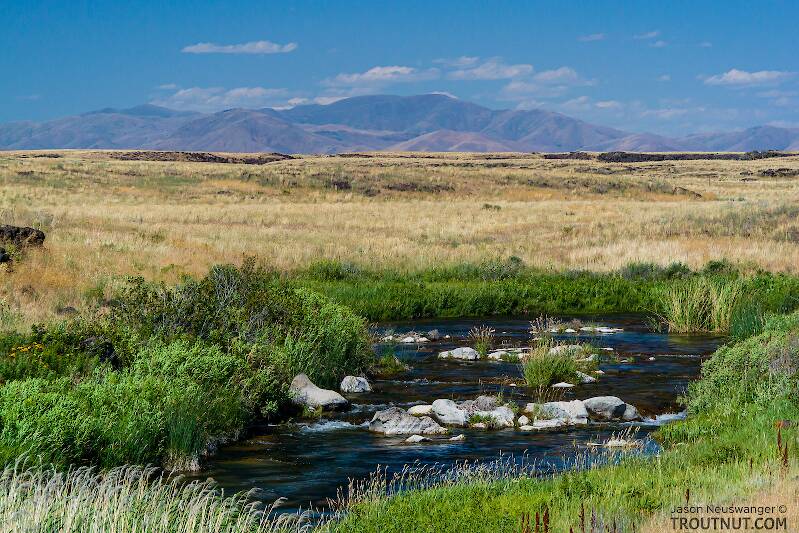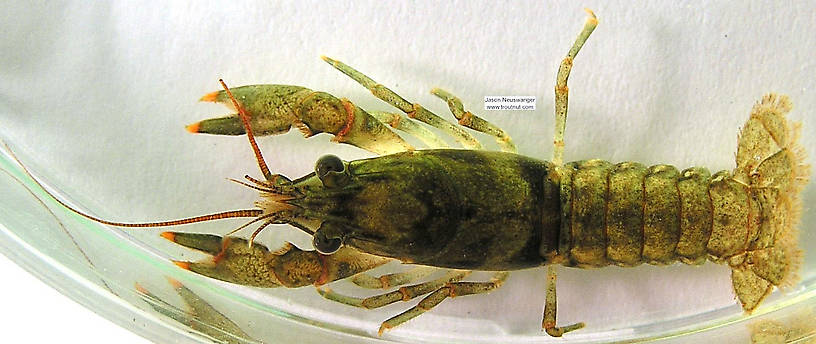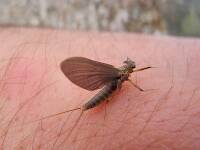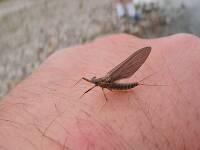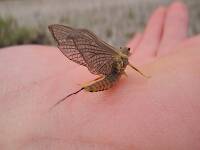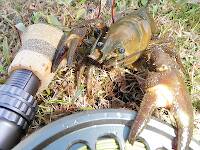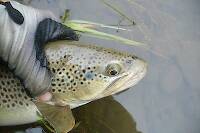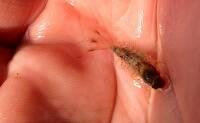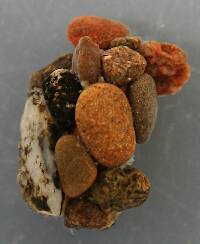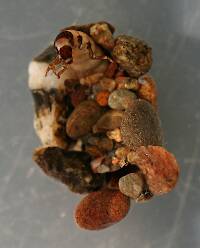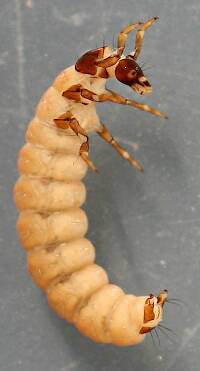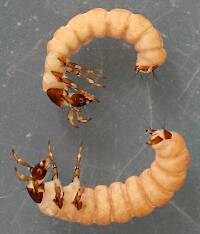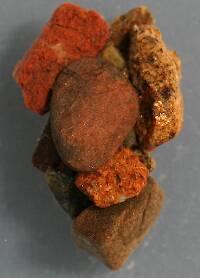
Salmonflies
Pteronarcys californica
The giant Salmonflies of the Western mountains are legendary for their proclivity to elicit consistent dry-fly action and ferocious strikes.
Featured on the forum

Some characteristics from the microscope images for the tentative species id: The postero-lateral projections are found only on segment 9, not segment 8. Based on the key in Jacobus et al. (2014), it appears to key to Neoleptophlebia adoptiva or Neoleptophlebia heteronea, same as this specimen with pretty different abdominal markings. However, distinguishing between those calls for comparing the lengths of the second and third segment of the labial palp, and this one (like the other one) only seems to have two segments. So I'm stuck on them both. It's likely that the fact that they're immature nymphs stymies identification in some important way.

Troutnut is a project started in 2003 by salmonid ecologist Jason "Troutnut" Neuswanger to help anglers and
fly tyers unabashedly embrace the entomological side of the sport. Learn more about Troutnut or
support the project for an enhanced experience here.
DMM
Posts: 34
Posts: 34
DMM on Nov 29, 2006November 29th, 2006, 2:39 pm EST
Cambaridae--probably Orconectes--your two crayfish could be Cambarus or Procambarus though--need pleopod pictures
David
RALPH
Posts: 1
Posts: 1
RALPH on Sep 27, 2007September 27th, 2007, 7:53 pm EDT
I WANT TO KNOW ABOUT THE SCIENTIFIC NAME
Taxon on Sep 28, 2007September 28th, 2007, 1:09 am EDT
Ralph-
I believe what David indicated was that the photos don't have a view of the body part(s) necessary to reliably identify it to genus, let alone species, so he confirmed the family is Cambaridae, and indicated it was probably of genus Orconectes, but could also be genus Cambarus or Procambarus.
I believe what David indicated was that the photos don't have a view of the body part(s) necessary to reliably identify it to genus, let alone species, so he confirmed the family is Cambaridae, and indicated it was probably of genus Orconectes, but could also be genus Cambarus or Procambarus.
Gene
Posts: 107
Posts: 107
Gene on Sep 28, 2007September 28th, 2007, 9:58 am EDT
As Taxon stated you must have morphological features to identify. However, if you wish to impress your friends you could just call it:
Crayfishus vulgarus or Crayfishus mother@#$%us!
tight lines and stay away from those pinchers
gene
www.eugenemacri.com
Crayfishus vulgarus or Crayfishus mother@#$%us!
tight lines and stay away from those pinchers
gene
www.eugenemacri.com
Sayfu
Posts: 560
Posts: 560
Sayfu on Nov 21, 2011November 21st, 2011, 10:47 am EST
When referring to the pincers...do they indicate the sex of a crayfish? One big claw, and they are males? I vaguely remember something about this, or just a pipe dream?
Jmd123 on Nov 22, 2011November 22nd, 2011, 7:07 am EST
Sayfu, that applies to hermit crabs, the males have one giant claw and the other is tiny...but as far as I know, not to crayfish.
Jonathon
Jonathon
No matter how big the one you just caught is, there's always a bigger one out there somewhere...
Entoman on Nov 22, 2011November 22nd, 2011, 7:18 am EST
Crayfish are notorious for stealing appendages from each other. Fish and other critters can chomp them off as well. They regenerate fairly fast and mud-bugs can often be found with claws of various sizes.
"It's not that I find fishing so important, it's just that I find all other endeavors of Man equally unimportant... And not nearly as much fun!" Robert Traver, Anatomy of a Fisherman
Quick Reply
Related Discussions
Topic
Replies
Last Reply
13
Sep 14, 2011
by Jmd123
by Jmd123

